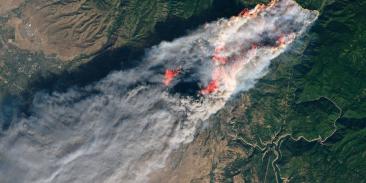Castor, Blunt Rochester, Torres Air Quality Monitoring Bill is a Step Toward Helping Communities Tackle Longstanding Inequities
EDF statement from Heather McTeer Toney, VP, Community Engagement
U.S. Representatives Kathy Castor (FL), Lisa Blunt Rochester (DE) and Ritchie Torres (NY) today introduced the Environmental Justice Air Quality Monitoring Act of 2022 which makes data from innovative hyperlocal air quality monitoring widely available in order to help reduce the pollution burden disproportionately borne by the Black, Asian, Latino and Indigenous communities.
“While there is a long way to go to address the systemic injustices associated with infrastructure development in this country, the Environmental Justice Air Quality Monitoring Act of 2022 recognizes the importance of providing communities with community-level data on harmful air pollution. Providing communities with information that is both rigorous and actionable can help improve children’s health, address environmental justice issues and support climate action now.
“We thank Chair Castor, Representative Blunt Rochester and Representative Torres for introducing the Environmental Justice Air Quality Monitoring Act of 2022 that would provide communities and state, local, and Tribal governments across the country with tools to better understand and describe air pollution and protect the health of residents.”
- Heather McTeer Toney, VP, Community Engagement
The bill is a companion to the S. 2476, the “Environmental Justice Air Quality Monitoring Act of 2021,” introduced by Senator Ed Markey of Massachusetts.
Additional Background:
The Environmental Justice Air Quality Monitoring Act of 2022 would direct $100m a year to hyperlocal air quality monitoring. It would enable monitoring of criteria air pollutants, hazardous air pollutants, and greenhouses gases at a neighborhood scale, in order to identify persistent elevated levels of air pollutants in environmental justice communities.* The funded projects would generate hyperlocal maps of air pollution and demographic characteristics, providing data to community residents and local, state, Tribal and federal air pollution managers.
* The term “environmental justice community” as defined in the Act means “a community with significant representation of communities of color, low-income communities, or Tribal and Indigenous communities that experiences, or is at risk of experiencing, higher or more adverse human health or environmental effects, as compared to other communities.”
With more than 3 million members, Environmental Defense Fund creates transformational solutions to the most serious environmental problems. To do so, EDF links science, economics, law, and innovative private-sector partnerships to turn solutions into action. edf.org
Media Contact
Latest press releases
-
Governor Hochul Repeals "100-Foot Rule," Accelerating New York's Clean Energy Future
December 19, 2025 -
Colorado Air Regulators Approve Landfill Methane Standards
December 18, 2025 -
Proposal Would Guarantee Public Access to Air Quality Data
December 18, 2025 -
New Bill Will Help Keep Domestic Manufacturers Competitive
December 17, 2025 -
Satellite Data Shows Colorado Oil & Gas Methane Emissions Dropped as State Rules Took Effect
December 17, 2025 -
EDF Europe: Energy Council Signals Shift to Delivery on EU Methane Regulation
December 17, 2025










